I want someone to explain some points in BlausC's amazing answer in this question.
He said that scriptlets had some disadvantages, which are:
Reusability: you can't reuse scriptlets. My question : how could I reuse JSTL code?
Replaceability: you can't make scriptlets abstract. What does abstract mean and how could JST become abstract?
OO: you can't make use of inheritance/composition. How could I use OO paradigms in JSTL?
Debugging: if a scriptlet throws an exception halfway, all you get is a blank page.
Testability: scriptlets can't be unit tested. What does that mean, and how can JSTL be unit tested?
Maintainability: per saldo, more time is needed to maintain mingled/cluttered/duplicated code logic. What does this mean?
The last thing is what he quoted form Oracle's recommendation:
JSP scriptlets should not be used for writing business logic.
In the MVC pattern, I use scriptlets only in the presentation layer. What does he mean here?
